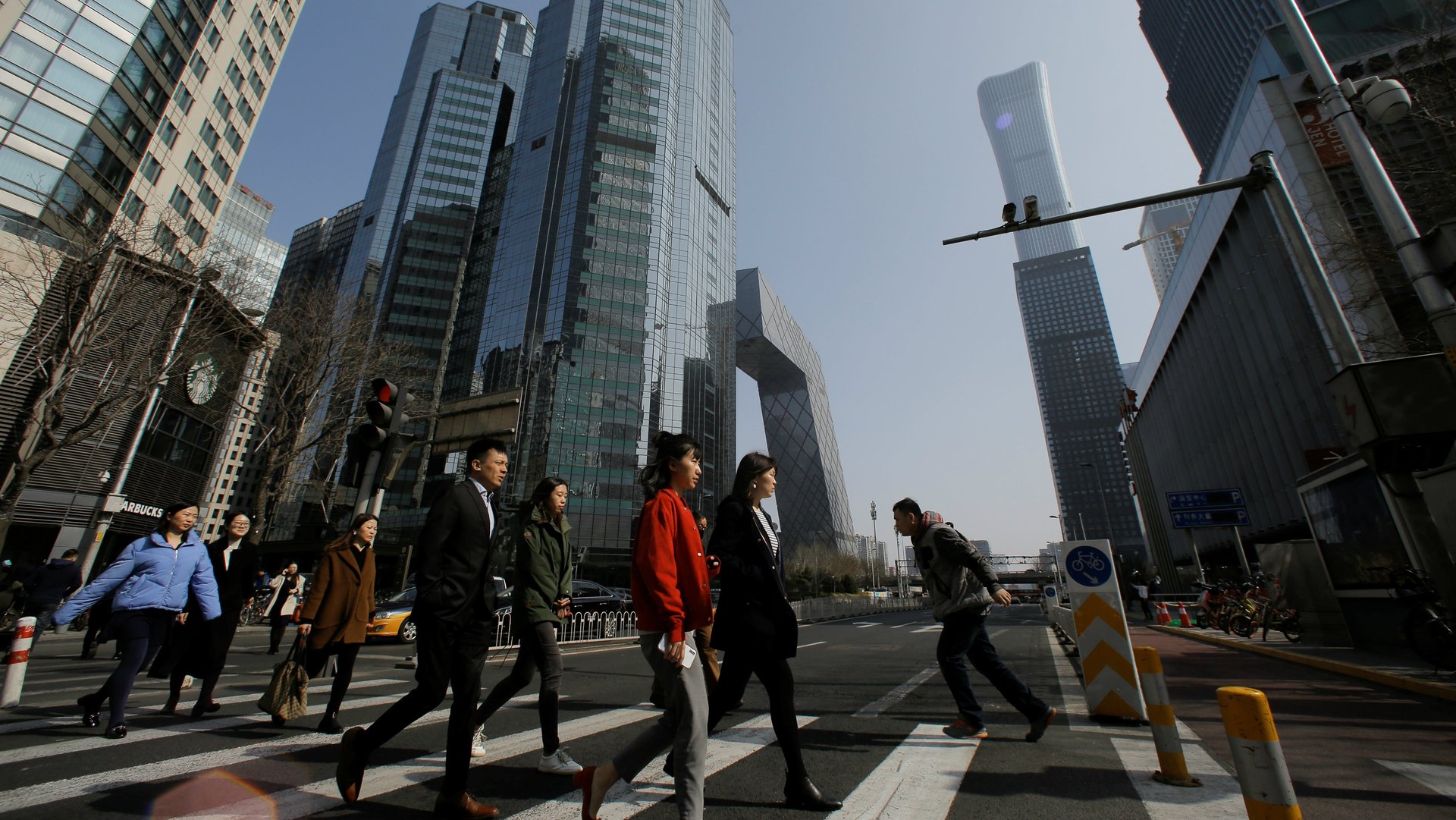China’s GDP data shows the damage to its economy from “black swan” events
China’s GDP grew 4.9% in the third quarter, the slowest pace in a year, as the country continues to grapple with a series of black swan events ranging from power shortages to a liquidity crunch amongst property developers.


China’s GDP grew 4.9% in the third quarter, the slowest pace in a year, as the country continues to grapple with a series of black swan events ranging from power shortages to a liquidity crunch amongst property developers.
Year-on-year GDP growth for July to September was the slowest since the third quarter last year, when China’s economy also expanded by 4.9%. It is worse than a 5.2% rate forecast by analysts polled by Reuters, and below the 18.3% and 7.9% growth in the first and second quarter, pointing to a continued decline. China’s high first-quarter GDP growth was buoyed by a low base last year, when the country saw its first quarterly contraction in GDP that quarter. Exports continued to be strong in the past quarter, jumping 28.1% year over year in September.
China’s crackdown dragged on GDP growth
The slowdown in third-quarter GDP was “mainly because of policy challenges from deleveraging the real estate sector, increasing compliance on the tech sector, and the clampdown” on a variety of sectors, wrote Iris Pang, chief greater China economist at ING, a Dutch banking group.
China has initiated a series of crackdowns on industries ranging from property to tech. Aimed at curtailing the private sector’s “disorderly” expansion, and reduce risks to its economy, the government’s actions have included ordering private tutoring firms to turn into non-profits, issuing record antitrust fines for tech giants, and a planned tax crackdown on the country’s entertainment stars.
Real estate developers, including Evergrande, are struggling to repay debt and fund projects as Beijing’s fear of a housing bubble has made it much harder for the firms to borrow. This has led to a slowdown in development activities in this sector, which is a major pillar of China’s economic growth. China’s fixed-asset investment, a measure of construction activity, declined 2.5% year on year in September, with real estate being a major drag, according to Chaoping Zhu, global market strategist at JPMorgan Asset Management.
Meanwhile, China’s recent power crunch, which is mainly due to tight supply of raw materials including coal, has also had some impact on regular production activity, said Fu Linghui of the National Bureau of Statistics, which released the GDP data today (Oct. 18), at a press conference. China’s industrial production increased by 3.1% in September, lower than analysts’ expectation of 4.5%. The lower-than-expected growth in the sector was also a result of supply chain disruptions caused by China’s new coronavirus outbreaks, which hit port operations, as well as a global chip shortage that continued in the third quarter, wrote Pang, the economist at ING.
Retail sales, which grew 2.5% in August year on year, bounced back to expand by 4.4% in September. But the pace of growth is still lower than an average of 8% in the sector before the pandemic, which points to weakness in domestic demand. “Regional [coronavirus] outbreak resurgence and lockdowns, as well as supply bottlenecks in the automobile industry, disrupted the consumption recovery. Further challenges might come from the softening consumer confidence,” said Zhu. Despite Beijing’s long-time wish to turn domestic consumption into a major engine of growth, its consumers are becoming increasingly wary of spending given the uncertain economic environment.
What is the GDP outlook for China?
Going into the last quarter of the year, all eyes will be on whether the government will roll out policies to spur economic growth. The central bank has already urged financial institutions to ease mortgages for qualified homebuyers, and not to stop funding for developers all at once. Analysts, including Pang, also expect the central bank to institute more monetary easing policies to support growth by ensuring enough liquidity.
But Raymond Yeung, the chief economist for Greater China at Australia & New Zealand Banking Group, said that the troubles of major corporates such as Evergrande may not move Chinese president Xi Jinping. “Instead, [Xi] prioritizes ‘people’, [so] a rise in unemployment could trigger a policy response,” Yeung told Quartz. China’s urban unemployment rate stood at 4.9% in September, lower than the same period a year ago.